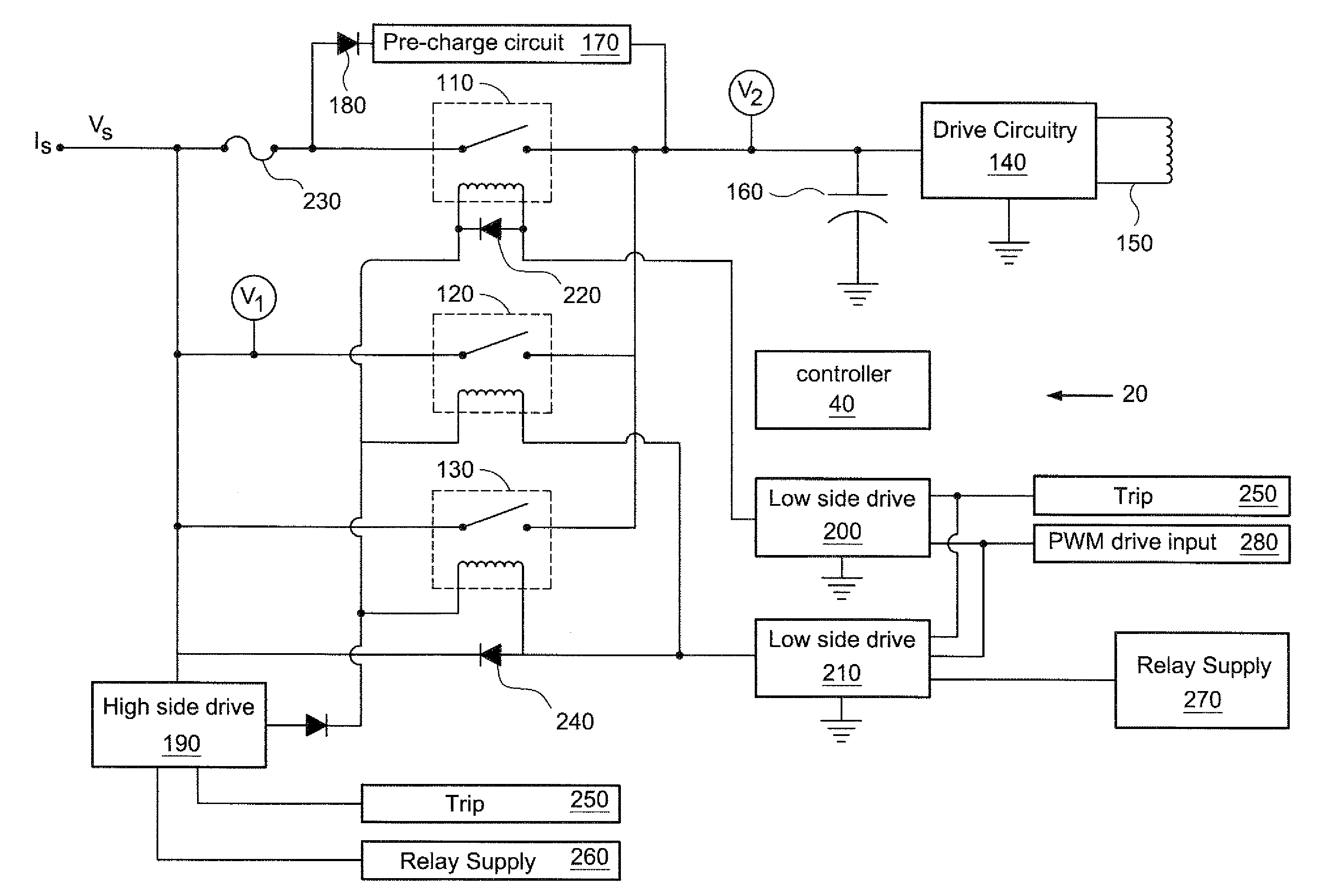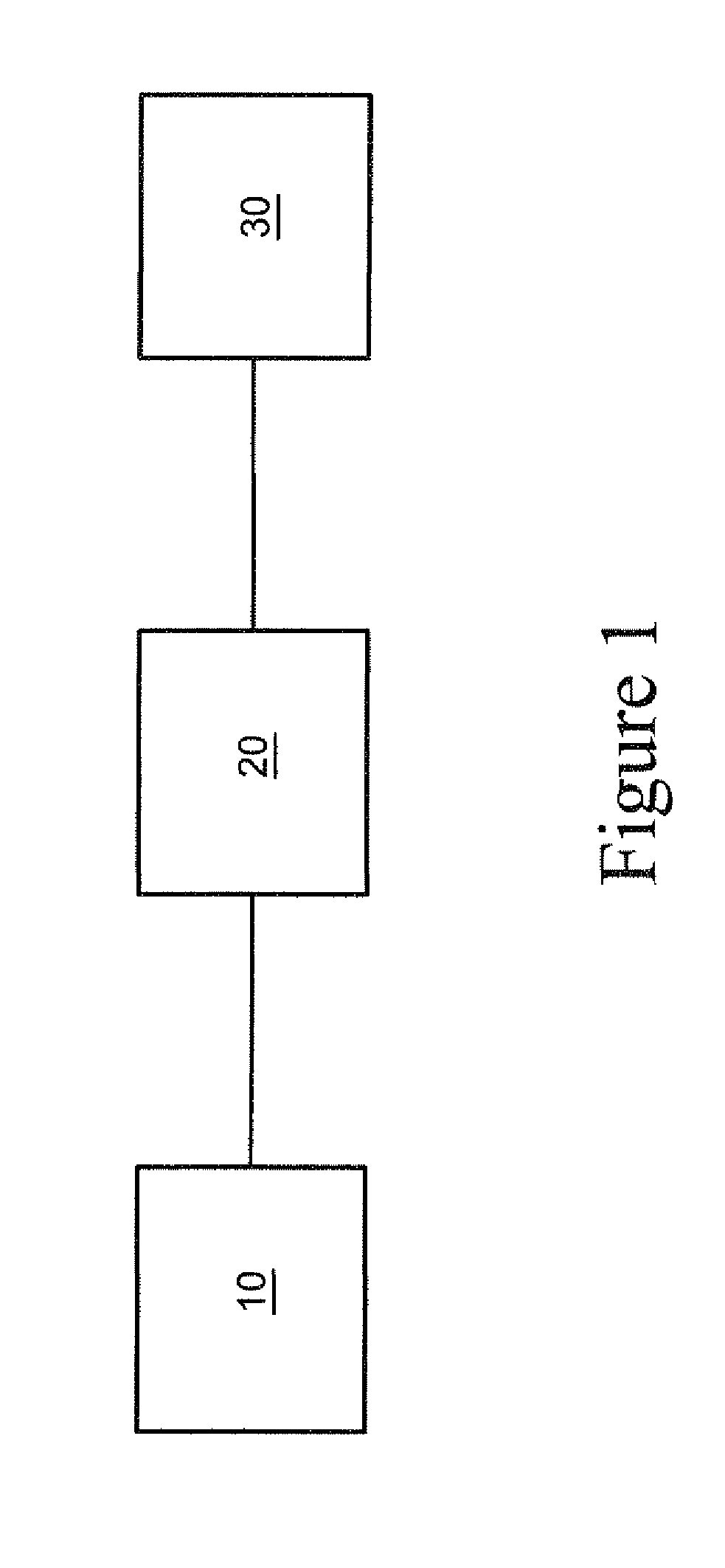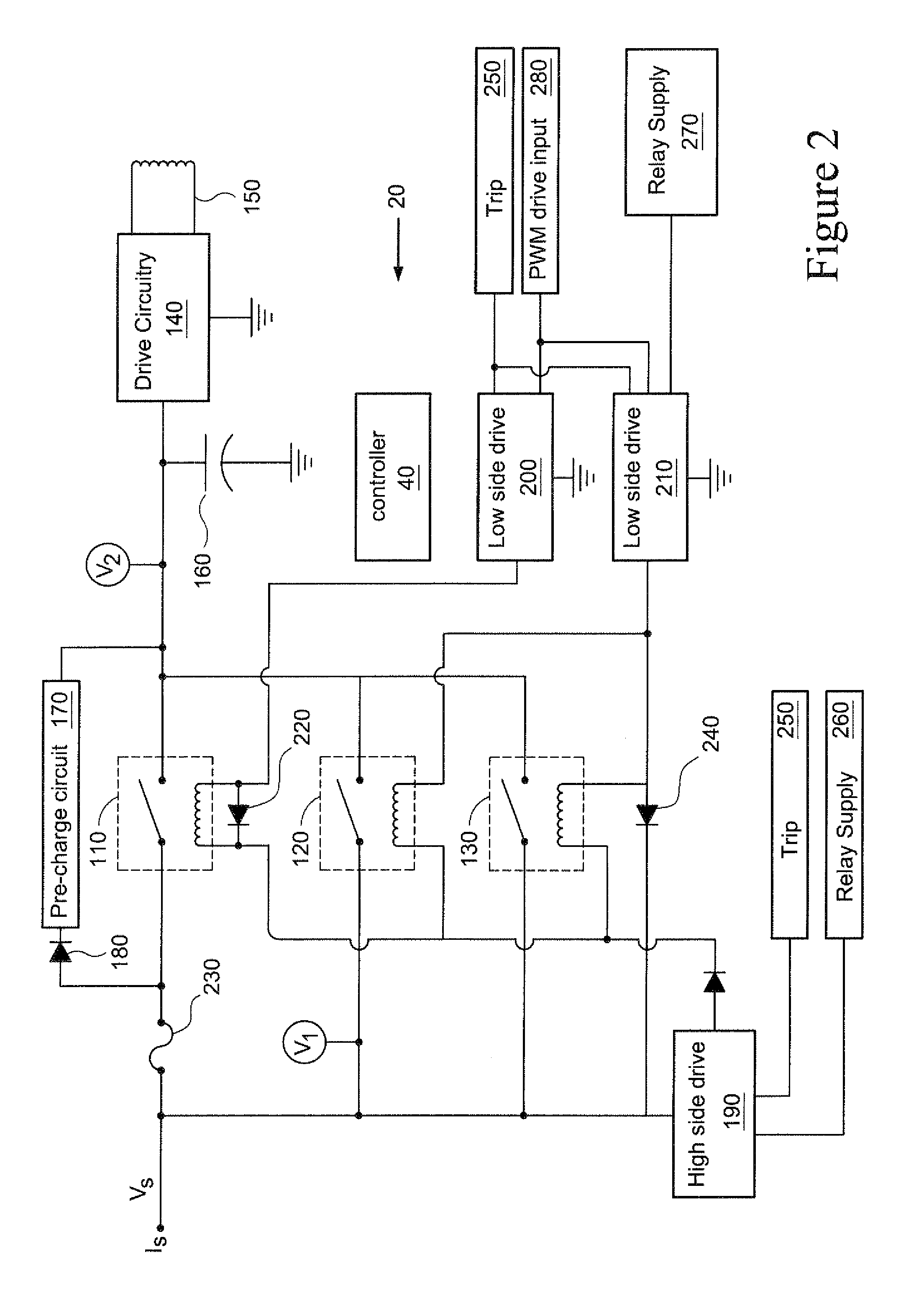Relay circuit
a relay circuit and circuit technology, applied in the field of electronic switching circuits, can solve the problems of affecting the usefulness of modern circuits, affecting the life of relay electrical contacts, and affecting the reliability of modern circuits, so as to reduce the voltage drop and prevent arcing
- Summary
- Abstract
- Description
- Claims
- Application Information
AI Technical Summary
Benefits of technology
Problems solved by technology
Method used
Image
Examples
Embodiment Construction
[0024]FIG. 1 illustrates the main components of a drive circuit for a battery powered vehicle, for example, a wheelchair. A battery supply 10, for example a 48V supply, is used to drive a wheelchair motor 30 via a switching circuit 20. In the event of an electrical fault it is necessary to reliably isolate the supply 10 from the motor 30 to prevent an unsafe condition from occurring.
[0025]The switching circuit 20 is shown in more detail in FIG. 2. The circuit 20 comprises a voltage supply Vs from the battery 10, a protective relay 110, first and second isolation relays 120, 130, and electronic drive circuitry 140 for a load 150, which in this example comprises the windings of the motors for the wheelchair.
[0026]The electronic drive circuitry 140 comprises a full or half bridge motor drive circuit (not shown) that is for driving the load 150 and is controlled by the protective relay 110 and the first and second relays 120, 130. The protective relay 110 and the first and second isolat...
PUM
 Login to View More
Login to View More Abstract
Description
Claims
Application Information
 Login to View More
Login to View More - R&D
- Intellectual Property
- Life Sciences
- Materials
- Tech Scout
- Unparalleled Data Quality
- Higher Quality Content
- 60% Fewer Hallucinations
Browse by: Latest US Patents, China's latest patents, Technical Efficacy Thesaurus, Application Domain, Technology Topic, Popular Technical Reports.
© 2025 PatSnap. All rights reserved.Legal|Privacy policy|Modern Slavery Act Transparency Statement|Sitemap|About US| Contact US: help@patsnap.com



